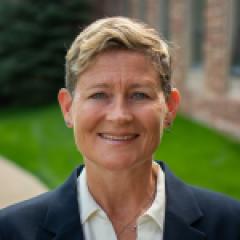Psychology Today: Instruction About LGBTQ People in Elementary School Is Age-Appropriate
KEY POINTS
- Trans kids know their identity as young as age 2.
- Kids in GLBTQ families are in every school.
- Teachers have an opportunity to reduce stigma and improve the experiences for all youth when they teach inclusively.
Florida recently (March 28, 2022) passed the infamous “Don’t Say Gay” bill, which prohibits instruction about gay, lesbian, bisexual, transgender, and queer (GLBTQ) people until the fourth grade and other states are following suit. Colorado recently passed an inclusive bill to update their social studies curriculum, but the committee updating the standards has just removed the mention of LGBTQ people from the standards affecting prekindergarten through third grade.
These moves to erase LGBTQ people from the curriculum are harmful and misinformed. When my son was in second grade, he was bullied for having two moms. Children in his class told him his family was either impossible or a “stupid fake” family. It broke my heart to learn that our family was used as a weapon to hurt my child at school. He deserved better. Schools are responsible for the health and well-being of all children.
Here are six reasons why “don’t say gay” bills are wrong and why we need LGBTQ-inclusive education at all grade levels.
1. Trans kids know their identity as young as age 2.
There is ample research indicating the struggles trans youth experience. Some of these are documented in GLSEN's National School Climate Survey and in a recent trans policy brief I co-authored with colleagues for the National Educational Policy Center. To counteract these harms, schools need to be able to talk about gender diversity at early ages to challenge gender stereotypes and make room for kids of all gender identities to be seen, respected, and safe at school and in their community.
2. GLB kids know they are different as young as age 5.
We also know that school and society are difficult places to grow up if you don’t identify as heterosexual. Children need to be able to see and understand that there are many healthy, happy GLB people who have made a difference in our world. Learning about LGB history and community members is one way to help GLB youth recognize their identity is not a source of stigma or shame so they can grow up with a healthy sense of pride in who they are. This can also protect them from later engaging in dangerous behaviors that result from homophobia including drug and alcohol abuse, skipping school, and self-harm.
3. Kids in GLBTQ families deserve to see their lives reflected at school.
Children who live in GLBTQ-headed households often do not see other families like theirs in books and lessons at school. We know positive relationships with families and communities improve students’ engagement at school, so it is essential to talk about GLBTQ people and families with students of all ages.
4. Bullying and name-calling are often based in harmful anti-gay stereotypes.
To reduce bullying and name-calling, teachers need to be able to plan and design thoughtful and inclusive lessons about diversity and difference. Some of the most common insults in elementary school are “gay,” “lesbo,” and “fag.” Children may not know what these terms mean, but they know they are insults designed to harm. Educators need to be supported as they implement lessons that address harmful stereotypes to address bullying and reduce these harmful forms of name-calling in elementary school.
5. Kids need to learn an awareness about the diverse world we live in.
When we don’t talk or teach about GLBTQ people until children are older, we are deceiving them and ill-preparing them for the world we live in. They see that official erasure and silence around LGBTQ people and history and learn to believe that it is negative and to be avoided. These lessons endure unless we thoughtfully offer accurate, age-appropriate information for students of all ages.
6. Social studies and literacy lessons are not sex ed.
Proponents of these bills argue that teaching about GLBTQ topics is "grooming" children for pedophiles or that it is teaching explicitly about sexual behaviors. What inclusive curriculum does is ensures diverse identities, families, and communities are part of the history and stories taught in schools. We talk about straight families and historical figures all the time without mentioning their sex lives. The same is true for LGBTQ families and historical figures.
Schools are responsible for preparing our children to become engaged citizens responsible for our functioning democracy. By officially erasing a large segment of our population (10–12 percent by most estimates), we are reinforcing negative stereotypes and creating another generation of people who believe LGBTQ people’s existence is “inappropriate.” There are wonderful lessons, texts, and discussion guides that model how to incorporate these topics in K–5 classrooms. Teachers need to have the support of legislation, state standards, and their communities to be able to be effective. Our kids deserve a complete picture of the world we live in. As a judge in Canada once ruled on a case in 2002 for the inclusion of LGBTQ books in a kindergarten classroom, "tolerance is always age-appropriate."
Resources for elementary classrooms:
- Welcoming Schools
- Learning for Justice
- Share My Lesson (American Federation of Teachers)
- New children's books (Publisher's Weekly)
- California lesson plans
References
Meyer, E.J., Leonardi, B., & Keenan, H.B. (2022). Transgender students and policy in K-12 public schools: Acknowledging historical harms and taking steps toward a promising future. Boulder, CO: National Education Policy Center
This blog post has been shared by permission from the author.
Readers wishing to comment on the content are encouraged to do so via the link to the original post.
Find the original post here:
The views expressed by the blogger are not necessarily those of NEPC.
